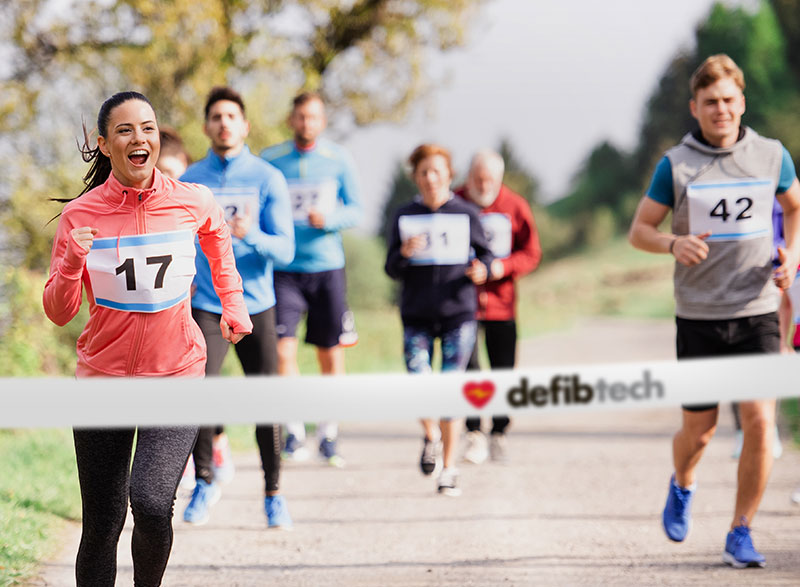News
Latest News
April 22, 2022

Marathon season is almost here! If you are organizing an event, you are probably in the final stages of planning – you’ve scoured the terrain for potholes to prevent twisted ankles, placed water stations along the route to reduce dehydration, and have medical teams on-site in case of injury or illness. But what if someone has a sudden cardiac arrest – are you prepared to save their life?
Sudden cardiac arrest (SCA) is when the heart suddenly stops beating. Anyone, including an athlete who seems perfectly healthy, can have an SCA. In fact, about 350,000 people in the United States have an SCA each year, according to the American Heart Association. About 90 percent of people having an SCA die. CPR can double or triple a person’s chances of survival, especially if administered immediately. Using an AED (Automated External Defibrillator) can also improve survival rates.
An AED response system can detect and evaluate a patient’s heart rhythm and deliver a life-saving shock as needed.
When the heart stops beating in a sudden cardiac arrest, oxygen-rich blood flow to the brain stops or slows down, which means the brain does not get the oxygen it needs to function well. Survivors of SCA may show signs of brain damage and other neurological problems. An AED can restart the heart so that blood can reach the brain quickly to prevent death, brain damage, and neurological disorders.
A portable AED machine allows professionals and bystanders to provide lifesaving care for anyone having an SCA.
A team of researchers recently reviewed 12 years of data from road races in Japan that took place between 2005 and 2017. In all, 1,965,265 runners participated in a total of 251 road races, which ranged from 6.2 to 26.2 miles long. Of these, 30 runners experienced cardiac arrest. Two runners with SCAs were unwitnessed, and neither was successfully resuscitated.
Witnesses saw the other 28 racers collapse with an SCA, and medical teams began CPR in less than one minute. The AED response time was quick – the median time between collapse and initiation of the first AED shock was 2.2 minutes. Spontaneous circulation returned for all 28 runners receiving an AED shock, which means their hearts started beating again while they were still at the event site. All of the patients had favorable neurologic outcomes when doctors assessed them one month after the SCA and again after one year.
The results of this study suggest that having a mobile AED response system provides favorable survival rates and neurological outcomes for witnessed SCAs during road races. Having the AEDs on hand allowed paramedics, physician runners, and volunteers on-site to provide life-saving care in minutes, which helped save lives.
An AED heart machine is easy to use:
For more information on AEDs for your next marathon, consult a medical supply professional or visit the Defibtech website.